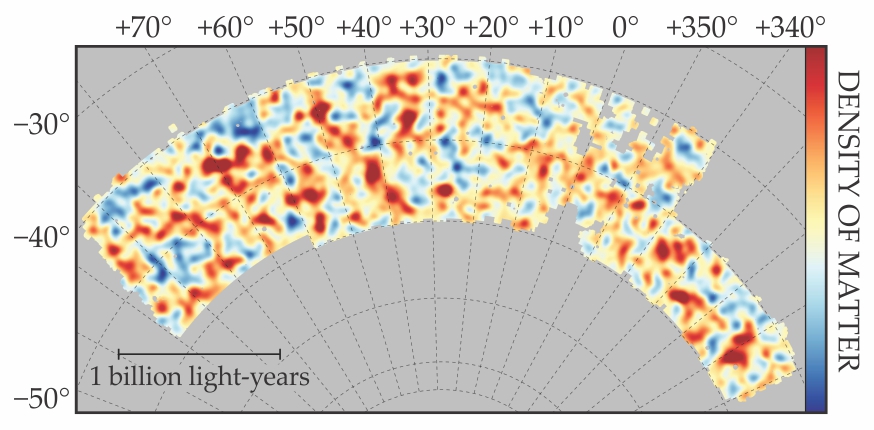Galactic census reaffirms standard model of cosmology
DOI: 10.1063/PT.3.3683
The Rosetta Stone for cosmologists is the cosmic microwave background (CMB), remnant radiation from the surface of last scatter some 380 000 years after the Big Bang. Through increasingly precise microwave-band measurements, most recently by the Planck satellite, scientists have refined their basic model of the universe. Known as ΛCDM, the model posits the existence alongside normal matter of cold (that is, nonrelativistic) dark matter and dark energy in the form of the cosmological constant. Yet for all the useful clues embodied in the CMB, there is a complementary cosmological story to be told by analyzing more modern structures, particularly galaxy clusters.
Enter the Dark Energy Survey, a galactic census of unprecedented detail conducted with a 570-megapixel camera mounted on a 4-meter optical telescope in Chile (see the article by Josh Frieman, Physics Today, April 2014, page 28

CHIHWAY CHANG AND THE DES COLLABORATION

The results rival the precision of Planck’s and are largely consistent with both the ΛCDM model itself and the model’s parameters as derived mostly from the CMB. Determinations of the density of matter in the universe and the sum of the neutrino masses, for example, yielded values that deviated slightly but are compatible with those from Planck. The survey data are also consistent with an unvarying cosmological constant. When combined with Planck measurements, the survey brings the value of the Hubble constant closer to the value deduced by observations of supernovae and Cepheid variable stars (see the article by Mario Livio and Adam Riess, Physics Today, October 2013, page 41
The survey’s error bars should shrink further once researchers crunch more data, first from three years of observing and then from five. Ultimately, the Large Synoptic Survey Telescope, currently under construction in Chile, will grab the baton when its camera captures 3.2-gigapixel images of more than 30 billion galaxies. (Dark Energy Survey collaboration, papers presented at the American Physical Society’s division of particles and fields meeting, 3 August 2017.)
More about the Authors
Andrew Grant. agrant@aip.org
